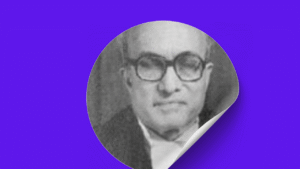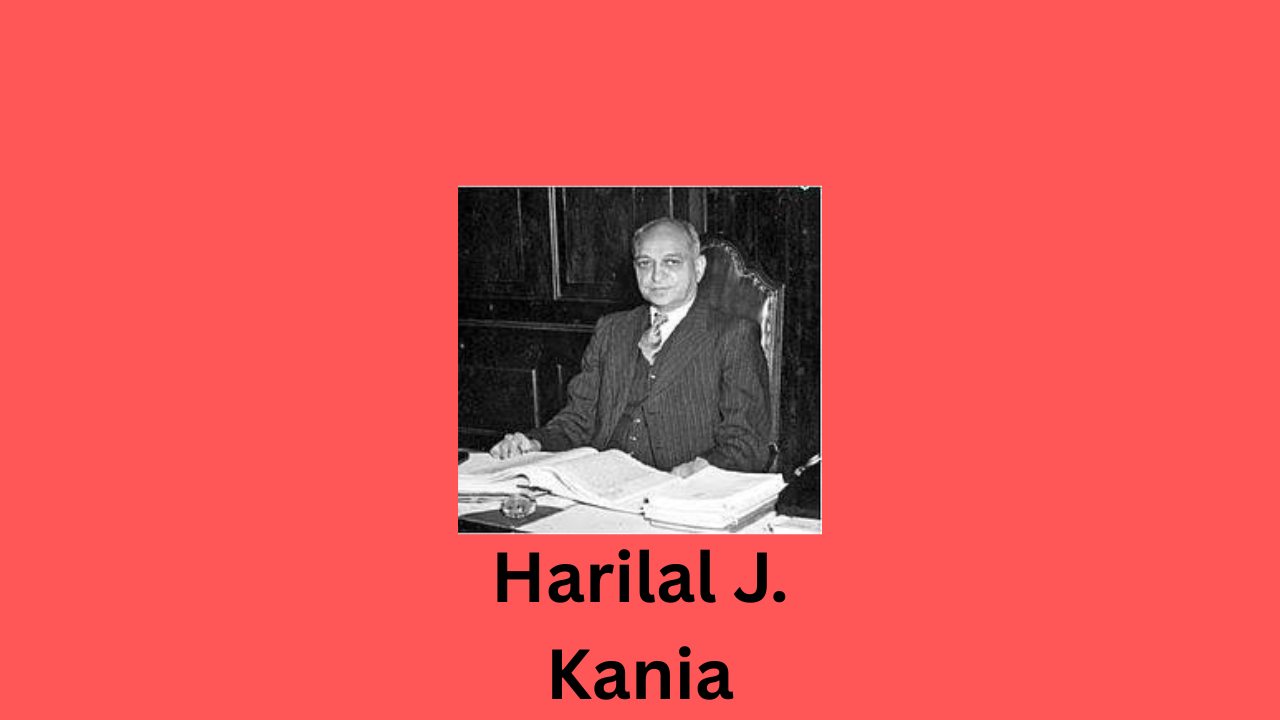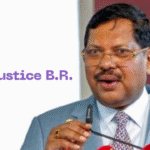Indian history looks back with pride on Harilal J. Kania as the first Chief Justice of India. He was a man of integrity and a workaholic from childhood. On 26 January 1950, the Constitution of India came into force. Justice Kania was appointed the country’s highest judicial authority and was sworn in by the President of India.
Rajendra Prasad became the first President of India. It was Rajendra Prasad who appointed Harilal J. Kania as the first Chief Justice of India. Kania was sworn in and also laid the foundation and functioning of the Supreme Court and played a very important role in transforming the legal framework of India from colonial to democratic republic.
Harilal J. Kania Early Life and Education
Harilal J. Kania was born on November 3, 1890, into a poor family in Mumbai, Maharashtra. Earning a modest living and driven by a deep respect for education, he completed his early education at Samaldas College, Bhavnagar, and later studied law at the Government Law College, Mumbai, Maharashtra. He received his LLB degree in 1915, also in Mumbai, where his dedication and understanding of legal principles soon shaped him into a skilled, good, and ethical lawyer.
In his early years, Kania worked as an assistant to the respected barrister Sir Chimanlal Setalvad. This work helped shape the professionalism that later became the hallmark of judicial conduct.
Judicial Career and Rise to Prominence
Harilal J. Kania’s journey in the Indian judiciary (Harilal J. Kania) mirrors the country’s own development. In 1930, he was appointed a judge of the Bombay (now Mumbai) High Court, where he served with distinction for nearly a decade, or ten years. Known for his balanced judgments, integrity, and his down-to-earth demeanor, he was elevated to the Federal Court of India, which served as the highest judicial body under British India at the time (1947).
His transition from the Federal Court to the Supreme Court of India in 1950 proved to be a landmark. When the Supreme Court was inaugurated on January 28, 1950, two days after the Indian Constitution came into effect, Justice Harilal J. Kania was appointed as its first judge. Kania appointed the first Chief Justice of India (CJI), also known as (CAG).

The Birth of the Supreme Court of India
The Constitution had a total of 395 articles, which were increased to 448 in 2025, or 470 according to some sources.
The Supreme Court of India falls under Article 124. The article clearly states
“There shall be a Supreme Court of India consisting of a Chief Justice of India and such other Judges as Parliament may by law determine.”
The Court initially consisted of a Chief Justice and seven Associate Justices. The Supreme Court was inaugurated in the Princes’ Chamber of the old Parliament House, where the Federal Court had been sitting since 1937.
The inauguration ceremony took place at 9:45 a.m. on January 28, 1950. The then Prime Minister, Pandit Jawaharlal Nehru, Attorney General M.C. Setalvad, and several other dignitaries were present, including the Chief Justices of various High Courts across the country. Justice Kania, as a symbol of the independence and dignity of the judiciary, presided over the ceremony with utmost respect.
Contributions and Legacy
When Pandit Jawaharlal Nehru became the first Prime Minister of independent India, J. Kania, the Attorney General of India at that time, also played a major role in establishing the legal system that continues to operate in India to this day. When India gained independence from British rule in 1947, J. Kania continued to carry forward the cause of independence with great strength.
He was known for his commitment to constitutional principles, the autonomy of the judiciary, and the protection of fundamental rights. His early decisions strengthened the foundation of Indian democracy and provided a strong bulwark for people’s rights.
Some of his major contributions are as follows:
1. Establishing Judicial Independence:
Justice J. Kania was firm in his belief that the judiciary should not be subject to any kind of pressure (either executive or political). After independence, when India was establishing itself on the administrative system, he created a new faction within the judiciary, similar to the one left by the British (as an institution). This took the credibility and prestige of the judiciary to new heights in the early years of the republic.
yaha tak
2. Interpreting the Constitution:
The Indian Constitution, which came into effect in 1950, was going through very difficult times. At that time, India signed the 1959 Delhi Water Agreement, which stipulated that of the six rivers originating in Himachal Pradesh, Pakistan would take 80% of the water from three rivers, and India would take 20%. India would take 80% and Pakistan would take 20% from the remaining three rivers. These six rivers were the Indus, Jhelum, Chenab, Ravi, Sutlej, and Beas. This is known as the Shimla Agreement.
3. Ensuring Public Confidence:
Justice Kania was known for his integrity. It was during his tenure that the first Five-Year Plan was introduced in India, with the Prime Minister as its chairman. India’s first Prime Minister was Jawaharlal Nehru, also known as Chacha Nehru. This plan emphasized agriculture. The plan was renamed the Planning Commission during the Modi government.
Learn more B.R gavai






